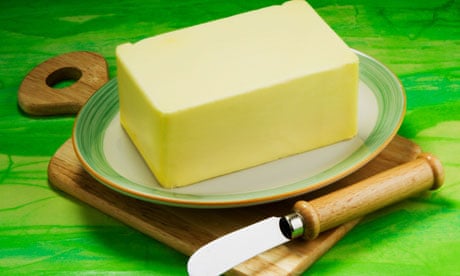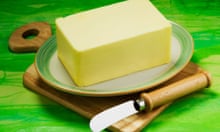Scandinavia's butter crisis is spreading. First Sweden ran into supply problems, in part blamed on a television chef urging everyone to use butter. Now Norwegians are facing a similar squeeze, as butter stocks have mysteriously melted away, sending prices soaring and shoppers frantically buying up slabs of the stuff wherever they see it.
Imports and distribution have become sporadic at best, and as soon as word gets out about a delivery, butter disappears from the shelves within minutes.
With the sense of national crisis deepening, the national daily Aftenposten ran a two-page spread with instructions on how to make your own butter. It's all a big disappointment for the domestic goddesses of the north for whom butter is a standard Christmas staple.
"I need butter today to make my lussekatt buns and my Christmas biscuits," grumbled one elderly Norwegian. "I brought up my four children under German occupation but this is nothing like that."
So who is responsible for the shortage? The dairy farmers blame Norway's largest dairy co-operative, Tine, for not informing them early enough about higher demand quotas, and for sending product overseas even as a domestic shortage loomed. Tine blames a combination of bad weather and higher demand arising from the popularity of the low-carbohydrate diet craze. Demand for butter has risen by 30%, while Norwegian cows produced 20m fewer litres of milk this year compared with last year. The wet summer resulted in poor-quality animal feed that affected milk production.
Norway's fiercely protectionist policies have also been criticised. In an unprecedented move, import tariffs were reduced from 25.19 krone (£2.74) to 4 krone per kg but this only applies in December. The Danish creameries are unwilling to export to Norway for such a limited period.
Professor Arne Nygaard, from the Norwegian Business School, views the problem as a result of a 1950s business model that no longer works in today's market.
"The problem is more to do with a lack of competition in the market," he said. "Tine is a monopolist in the market as a result of outdated postwar regulatory regimes in a concentrated market with high entry barriers."
Tine produces 90% of Norwegian butter and is a government-appointed agency that regulates the market. For Nygaard the problem is not uniquely Norwegian but more generally Scandinavian. "The Swedish market is just as concentrated and as rigid as the Norwegian one," he said. "Norway and Sweden are two interconnected markets and although it is an empirical question, this may affect the Swedish market." If so, butter shortages might also hit other Nordic countries, such as Finland and Sweden.
Norwegians are trying to cope in different ways. The search for butter has become almost a national pastime. Some are selling butter they have bought on finn.no, an online auction room. For others, the crisis has presented a PR opportunity: enterprising Danish dairy businessman Karl Christian Lund sought to butter up his country's Norwegian neighbours by handing out 2,000 packs of free product in Kristiansand and Oslo.



